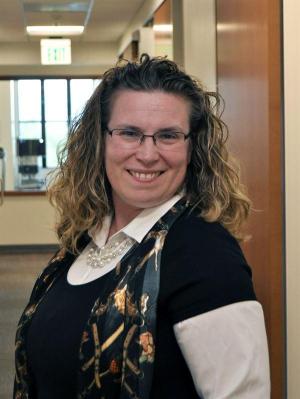Getting to the heart of women’s health
Women are complex, especially when it comes to health care, and an upcoming conference will focus on the necessity of a multi-disciplinary approach to keep females healthy and active.
“Women in Sports Medicine: Dancing Through the Ages” will examine the importance of exercise, how it contributes to both physical and mental health, and how health-care providers can work together to ensure women remain active throughout their lives.
The conference, sponsored by University of Colorado Sports Medicine and Medical Educational Resources, will be Feb. 24 at the Stadium Club at CU Boulder’s Folsom Field. It is open to anyone but is geared toward those who play a role in women’s health. For registration information and a full agenda, visit https://www.regonline.com/builder/site/Default.aspx?EventID=2066682
“(Conference topics) hit at every stage in a woman’s life, from the time we are kids through old age. We have patients who are 80 and 90 who are still busy and grooving,” said Sherrie Ballantine-Talmadge, a doctor of osteopathic medicine at CU Sports Medicine and Performance Center in Boulder and an assistant professor of orthopedics.
It’s no coincidence that the conference is scheduled in February, which has been designated as American Hearth Month by the American Heart Association, said Ballantine-Talmadge.
“We know women die of breast cancer, but we forget that more women die of heart disease than breast cancer. We want to bring more awareness to the idea that exercise is medicine.”
She hopes the conference becomes an annual event and helps highlight some of the treatments and research being conducted at the center, which opened in 2015. Ballantine-Talmadge said she also hopes to grow relationships with other entities that have a vested interest in helping girls move.
Topics at the conference include innovate techniques to preserve cartilage; anterior cruciate ligament (ACL) injuries, which are more prevalent in women; overuse injuries in youth sports; exercise during pregnancy; and barriers to exercise.
Ann McNamara, physical therapy director at the Performance Center, will discuss concussions and how the injury differs for women.
The center treats many athletes who have suffered concussions and are working to get back into their sport, what is termed “return to play” and is governed by a set of international guidelines. Ballantine-Talmadge said a pool at the center is being used to help athletes rehab from concussive injuries.
“We have found there are differences in the way certain athletes have more prolonged concussive symptoms. These athletes are downhill skiers, half-pipers, figure skaters, dancers, divers, gymnasts and hockey players,” Ballantine-Talmadge said. “The difference is that these people move very fast and turn and have been doing it for years. The weirdness of the way they are in space, their eyes and balance, make the way they respond to concussion different from a basketball player or a football player.”
The pool becomes a zero-gravity experience for the recovering athlete.
“Take a cheerleader who gets thrown in the air and flips and someone misses catching her, and she gets a concussion. We can use the pool to get her to flip and rotate again in a safe place and we try to re-create her symptoms or have her get comfortable (with the moves again),” said Ballantine-Talmadge. “I don’t know of any other place in the country that is doing sports-specific rehab using a pool. It has really helped some of these athletes get back to their sports at 100 percent.”
The keynote speaker at the conference will be Carrie Jaworski, the director of the Division of Primary Care Sports Medicine for NorthShore Orthopaedic Institute in Illinois. She will discuss “Exercise is Medicine,” a “global health initiative managed by the American College of Sports Medicine (ACSM) that encourages primary-care physicians and other health-care providers to include exercise when designing treatment plans for patients.”
Some of her talk will focus on how the concept can be implemented in medical practices and how physicians can apply the guidelines.
“Some of this really is about debunking the idea of simply giving people blood pressure or other medications, and, instead, figuring out the barriers to keeping people exercising,” Ballantine-Talmadge said.
“Just as women are very complex in all stages of life, the way we take care of them also is very complex. I can’t take care of a woman by myself,” she said. “I need other people to do different things than I do to help keep women healthy and active in all the stages of her life.”




